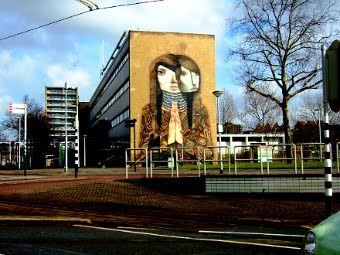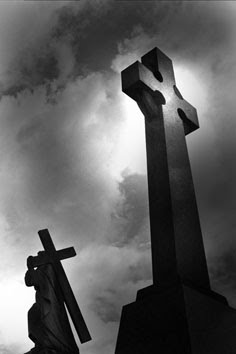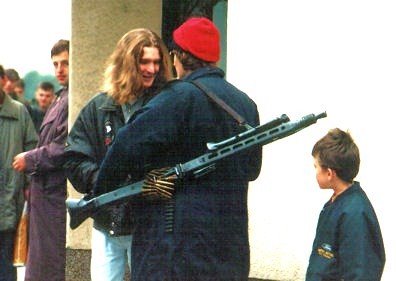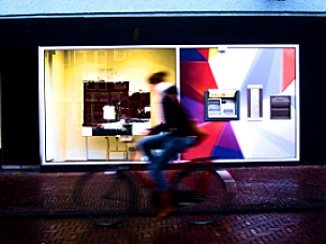I began writing this review after a very long night of reading. During Summer past, I was asking myself about this book and what it could say to me as one of those who participated in the British 60's & 70's counter-culture. Sure, I had heard of Operation Julie. Big news at the time, but the details escaped me. I was busy then with a war in another part of the United Kingdom.
What made me read on and on was simply the story. Living outside the law is an exciting biography about Fielding's remarkable early life as a hippy on the road and subsequent rise in Intertrans Acid supply company. But his story is more. It's also an account of the British Acid Movement's drug fuelled social revolution and how a whole section of society viewed their world at that time.
“What do you think about acid” he asked me straight out. “Mmm, difficult” I said ... Let's see...LSD is probably the best hope the human race has got of coming to grips with its problems.” (p 219).
That universal period of Hippy subculture is well documented in music and folklore. However, Fielding opens the door to the activities of a core British youth galvanised by heady events from Haight-Ashbury's Summer of Love in 1967 to the thrilling half a million strong Isle of Wight pop festival in 1970.
This is a superb read for those who desire to understand the mind of a rebellious youth. A time of Hippy temptation and solidarity. Fielding fills the gaps and provides us with continuity. He describes the fate of those who led the British Acid Movement to Turn on, Tune in and Drop out after we all married and got sucked into the society we opposed.
Indeed I had spent some time with the legendary Alston “Smiles” Hughes, later to become a top player in the Acid ring. Meeting in London in 1970 when I was seventeen years old, we joined the party at the Isle of Wight after which we hitched together to north Wales and on to Birmingham. All the time discussing the merits of a bohemian sub-culture based around the use of a psychedelic drug people have used since religion was invented. And, a drug some informed people will continue to use as a source of spiritual and creative influence forever more.
The revealing detail around Operation Julie and the subsequent jail term is chilling. Fielding provides a rare insight into a tormented imprisonment for those who should not have been there. The fifteen strong Julie mob, as they are referred to in the book, bear more resemblance to a group of political prisoners. In many ways they were just that. Their collective motivations toward creating social change is captivated perfectly through Leaf's own personal stories. What a journey.
The book, for those who understand the effects of LSD, takes the the reader on its own gripping trip of discovery and ultimate realisations.
First there is the initial rush to reach the first plateau of awareness. Then it swiftly engages the delights of Fielding's mad crazy and unconventional behaviour often associated with the drug. The book then finally passes the doors of perception to reflect on its conclusive study while the inevitable bad comedown is reported from a prison cell. Clever Fielding, he knows his drugs.
========================================================================
Secret Ai Weiwei Message found in Rotterdam.
 |
| Ai Weiwei pictured during an interview commissioned by the Rotterdam architecture museum. click on picture |
Secret Ai Weiwei message found in Rotterdam.
Confronting the past to bring it into the modern world is open code for reconciliation in Europe’s tribal and social conflict zones.
The Ai Weiwei code was discovered in a clever interview with the master during a recent visit to the renowned Rotterdam Museum for Architecture. It clearly demonstrates that architecture (living together) is closer than you think.
===================================================================================================================================================
Violence, Veils and Bloodlines
By Louis J. Salome
McFarland Publishing, 2010
McFarland Publishing, 2010
Louis J. Salome on “Violence, Veils and Bloodlines.”. For more information, visit www.louisjsalome.com.
Salome spent 35 years as a journalist and editor, including nearly a decade overseas. For much of that time, he was stationed in Jerusalem, but he spent time in Bosnia, Algeria, Ireland, Somalia, Lebanon, Syria, Iran, Iraq, Afghanistan, Central Asia and the Soviet Union.
It’s a natural instinct for people of common backgrounds to band together while dividing themselves from people of other backgrounds. That, in a nutshell, is how Salome defines tribalism.
Salome has found that there are six key components to a tribe’s identity: ethnicity, religion, culture, language, land and history. Throughout his time abroad, he faced a common question meant to encompass most or all of those tribal components. The people Salome met during his travels almost invariably asked him where he was from. But they didn’t want to know where he lived or even where he was born. They wanted to know his paternal ancestry, or, put another way, his blood.
It’s a natural instinct for people of common backgrounds to band together while dividing themselves from people of other backgrounds. That, in a nutshell, is how Salome defines tribalism.
Salome has found that there are six key components to a tribe’s identity: ethnicity, religion, culture, language, land and history. Throughout his time abroad, he faced a common question meant to encompass most or all of those tribal components. The people Salome met during his travels almost invariably asked him where he was from. But they didn’t want to know where he lived or even where he was born. They wanted to know his paternal ancestry, or, put another way, his blood.
Trying to eradicate tribalism from the world would be a futile endeavour. But Salome hopes that his readers learn to recognize the common traits they share with people all over the world, and thereby develop tolerance and compassion for other tribes. The biggest and broadest tribe is one to which we all belong, and that’s the human race.
“I also hope that they come to understand the world and themselves and the people around them a lot better than they did before. And I think that they will.”
January 4 2011
“The Wire” weekly newspaper, Portsmouth, New Hampshire
Journalist Louis J. Salome found himself in a desperate situation while reporting from Iraq in March of 1991. …......... He had entered the country across the Tigris River from Syria just days earlier with a Kurdish guide, but was soon forced to flee, dodging bullets and trying to escape into Turkey across the Khabur River. The fact that Salome couldn’t swim, and that armed Turkish soldiers on the far bank were determined to keep him out, made his escape especially problematic.................“When you’re hiding behind a broken-down concrete building on the Khabur River trying to get into Turkey, and the Iraqi helicopters are shooting down at Kurds who are mixed in with us along the river, there’s nothing you can do,” Salome said. “Just hope to hell that nothing gets close enough to you.”............A group of four reporters eventually swam across the Khabur and made it to the other side, where they sent back a raft to rescue Salome and others.
May 23, 2011
Martin Nangle; photographer, Leiden, the Netherlands -- "Well, I reached the last chapter and I found the book thoroughly great. I know I was following some of my own travels but, that aside, the chapters on Somalia, Algeria and Central Asia, where I didn't go, were stunning. I gotta say that the fight in the Ukrainian cafe, the road trip in Bosnia and the cotton buds for your ears in Uzbekistan are memorable. Well done."
- [Louis J. Salome travelled with Martin Nangle, a photographer originally from Northern Ireland, 20 years ago in Syria, Iraq and Turkey, right after the first Persian Gulf War. He's in chapter two of Violence, Veils and Bloodlines.]
Nov. 23 , 2010
Lynn Harnett of Kittery, Maine, for Seacoast Sunday. ….......Salome discusses the Middle East and its shifting alliances, as well as Ireland, the Balkans, Somalia and Central Asia, all within the context of deeply rooted tribalism. Loyalties may be forged with outsiders, but only as they benefit the tribe, which begins with family and widens to include religion, ethnicity, nation.
His knowledge of history goes deep and his explanations are clear and concise (though the intricacies will still make your head spin). But it's his personal experiences that draw the reader, allowing us to attach real people to what often seem hopeless quagmires. Salome invites the reader to follow the evolution of his own thinking.......from rubble dwelling survivors in Lebanon to the beaten, but unbowed Bernadette Devlin in Northern Ireland.
…... This is a book for anyone interested in understanding our troubled times, and finding the humanity in war-torn places.
Dec. 22, 2010
Rick Broussard; New Hampshire Magazine…....Louis Salome spent decades on various battle lines of Middle Eastern conflicts and what he learned puts concepts of endless war and jihad into perspective.
We are tribal creatures, with ancestral ties and grudges that are embedded in our views of the world and of ourselves. Salome’s book is a potent distillation of the hard truths earned as an eye-witness to history. He applies keen journalistic discipline and poetic introspection to the task of answering the question that still burns in the 21st century....
Dec. 29, 2010 - Doug Struck, former correspondent Washington Post, Baltimore Sun, Journalist-in-Residence, Emerson College, Boston.
"Violence, Veils and Bloodlines is a sweeping tour of the world’s most contentious corners with a delightful and insightful guide, one of the best of a dwindling breed of adventurous foreign correspondents.
"Salome is relentlessly clear-eyed as we go with him on his journeys. We flee with him on a makeshift raft from Iraqi Kurdistan with Saddam Hussein’s forces close behind. We chase Iraqi scud strikes in Tel Aviv, a city nearly emptied by fear of poison gas. We witness a ritual slaughter and dip our hands in sheep’s blood with what’s left of the Biblical Samaritans on Mt. Gerizim.
"We run under Syrian artillery guns in a darkened catamaran to slip into a Lebanese harbor at war. We inch through treacherous tunnels in Afghanistan’s fabled Hindu Kush Mountains. We watch women and children approach death in Somalia. We race past checkposts in Uzbekistan with a haughty poseur general recruiting Jews to leave for Israel. We are silenced with the crowd in Dublin by a lone crooner’s rendition of Danny Boy. We are pick-pocketed in Tashkent. And we hold chairs to our rears as we chase a Ukrainian waiter around his restaurant to get a meal.
"It is a wonderful book, a rare opportunity to be a companion to a road-worn, wise, but never weary observer of the world."
July 8, 2010
By Jane Sander "jes" New Hampshire,
"Violence, Veils and Bloodlines should be required reading for all journalist students, history majors and politicians. This memoir is insightful and educational for those of us that haven't strayed far from our own tribes. Many of the author's stories either had me laughing out loud or sitting at the edge of my seat."
By Jane Sander "jes" New Hampshire,
"Violence, Veils and Bloodlines should be required reading for all journalist students, history majors and politicians. This memoir is insightful and educational for those of us that haven't strayed far from our own tribes. Many of the author's stories either had me laughing out loud or sitting at the edge of my seat."
June 9, 2010
By Rosemary E. Jones, Fort Lauderdale, Flordia. “Memorable and Universally Significant,”
By Rosemary E. Jones, Fort Lauderdale, Flordia. “Memorable and Universally Significant,”
"Bloody wars through history can basically be traced to conflicting bloodlines, according to Louis J. Salome, author of Violence, Veils and Bloodlines. This fascinating report from war zones is based on his experiences as a foreign correspondent for Cox, and ranges from wars in Ireland to Israel and other nations in upheaval, including Afghanistan Algeria, Bosnia, Iraq, Lebanon, Somalia and areas of Central Asia.
"In his case, his bloodline can be traced to a village in Syria and Christian grandparents who emigrated to Rhode Island in 1906. Which makes him a Syrian American New Englander, who married an Irish American.
======================================================================================================
======================================================================================================
The Talented ‘Vinnie Who” Comes to Rotterdam Town
Young, fresh and passionate is how “Vinnie Who” looked, sounded and performed on stage last night at the RoTown club Rotterdam. Just a touch over one hundred people of mixed gender, age and background turned up to hear an exciting gig on the second leg of their Live 2011 tour. Although they are just three years together, this band plays with the style and cohesion of a group who works, thinks and lives life together.
They classify themselves as pop/disco but sounded to me like an evolution of dance and rock. One thing’s for sure, this music will make you want to pop, disco, dance and rock to each and every number.
Their front row line up, Kristina Kristensen, Niels Bagge and Dennis Morton bring the party to immediate life with their flair and stage action supported by the back row heavy sound of Simon Stefanski, Martin Sandberg and Martin Sahl. The audience appreciated the opportunity to join in and for the duration were captivated by the band’s strong sense of powerful style, rhythm, bass and synths rock.
“We just need to be on the road playing, being new and keeping in touch” said Simon backstage after the show. Earlier, I heard Neils introduce “Vinnie Who” simply saying “We are a band from Denmark” Lets watch and listen as they make it from Denmark onto the world stage.
As for keeping in touch I will hear the band again this Sunday 28th at Paradiso, Amsterdam where they gig in an evening line-up.
=======================================================================================================
Young, fresh and passionate is how “Vinnie Who” looked, sounded and performed on stage last night at the RoTown club Rotterdam. Just a touch over one hundred people of mixed gender, age and background turned up to hear an exciting gig on the second leg of their Live 2011 tour. Although they are just three years together, this band plays with the style and cohesion of a group who works, thinks and lives life together.
They classify themselves as pop/disco but sounded to me like an evolution of dance and rock. One thing’s for sure, this music will make you want to pop, disco, dance and rock to each and every number.
 |
| "We are a band from Denmark," Vinnie Who 2011 |
“We just need to be on the road playing, being new and keeping in touch” said Simon backstage after the show. Earlier, I heard Neils introduce “Vinnie Who” simply saying “We are a band from Denmark” Lets watch and listen as they make it from Denmark onto the world stage.
As for keeping in touch I will hear the band again this Sunday 28th at Paradiso, Amsterdam where they gig in an evening line-up.
=======================================================================================================
Deviant Art gets noticed in the Hague

 When people get all riled-up about images, whether or not they be called art or deviant art, it stirs interest. Recently and exhibition about such a subject was shown in the Hague. It showcased the work of Hans Bellmer 1902-1975 and Louise Bourgeois 1911-2010. What was amusing, rewarding and slightly ironic was the welcoming 4 meter x 3 meter portrait of Louise by the photographer Robert Mapplethorpe, who's work also bore the brunt of the deviant (Entartete kunst)accusations in the land of the free and the home of the first parliament. Now, what would Adolf have said about that.
When people get all riled-up about images, whether or not they be called art or deviant art, it stirs interest. Recently and exhibition about such a subject was shown in the Hague. It showcased the work of Hans Bellmer 1902-1975 and Louise Bourgeois 1911-2010. What was amusing, rewarding and slightly ironic was the welcoming 4 meter x 3 meter portrait of Louise by the photographer Robert Mapplethorpe, who's work also bore the brunt of the deviant (Entartete kunst)accusations in the land of the free and the home of the first parliament. Now, what would Adolf have said about that.

 When people get all riled-up about images, whether or not they be called art or deviant art, it stirs interest. Recently and exhibition about such a subject was shown in the Hague. It showcased the work of Hans Bellmer 1902-1975 and Louise Bourgeois 1911-2010. What was amusing, rewarding and slightly ironic was the welcoming 4 meter x 3 meter portrait of Louise by the photographer Robert Mapplethorpe, who's work also bore the brunt of the deviant (Entartete kunst)accusations in the land of the free and the home of the first parliament. Now, what would Adolf have said about that.
When people get all riled-up about images, whether or not they be called art or deviant art, it stirs interest. Recently and exhibition about such a subject was shown in the Hague. It showcased the work of Hans Bellmer 1902-1975 and Louise Bourgeois 1911-2010. What was amusing, rewarding and slightly ironic was the welcoming 4 meter x 3 meter portrait of Louise by the photographer Robert Mapplethorpe, who's work also bore the brunt of the deviant (Entartete kunst)accusations in the land of the free and the home of the first parliament. Now, what would Adolf have said about that.
================================================================================================























.jpg)

